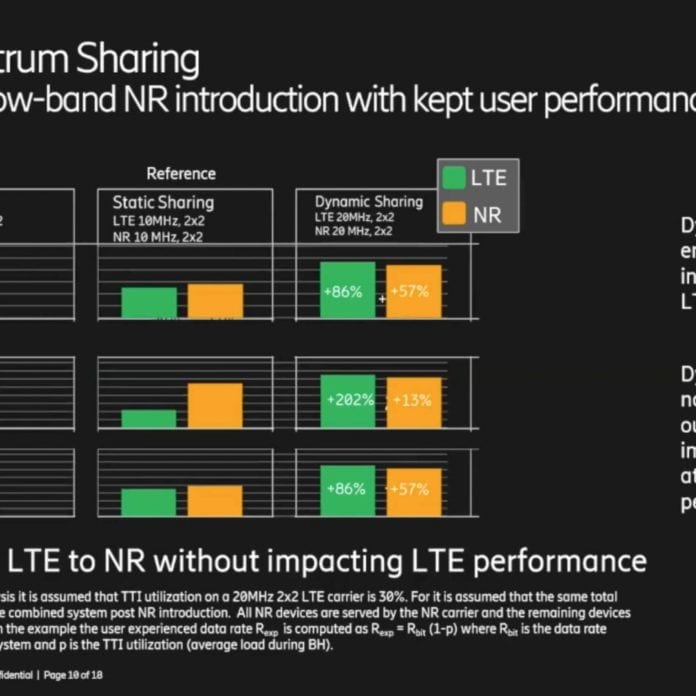Dynamic spectrum sharing network performance considerations
Dynamic spectrum sharing is widely viewed as a key short-term enabler of scaling out 5G networks quickly. Rather than the slow, expensive process of re-farming spectrum from one generation connectivity technology to the next, DSS lets operators operate LTE and 5G NR in the same band at the same time. Ericsson is the only vendor with a commercial product and the company said last month that 80% of its customers testing the solution plan to deploy in the next 12 months.
Aside from the scale aspect, DSS also helps ease the transition from non-standalone 5G networks to standalone 5G simply by providing a coverage layer prior to a core transition. But the technology is not without its critics, perhaps most notably T-Mobile US President of Technology Neville Ray who provided some commentary on a February earnings call.
He called the technology “late” and said, “We’re seeing as we learn more that, as you deploy DSS, it kind of eats away on the net capacity of the shared radio. And if you rush into that now, some of the early roll-outs and workarounds and pieces that we’ve seen are pretty corrosive and they would suck up capacity just by rolling out the feature.”
So what’s the response to this issue around DSS and capacity loss? We asked Sibel Tombaz, Ericsson’s head of 5G high-band and active antenna systems, Product Area Networks. She discussed the question in terms of NR-compatible device penetration and as compared to static spectrum sharing wherein a certain amount of bandwidth and certain amount of radio equipment is dedicated separately to LTE and to 5G.
“In the beginning, we will have very, very few NR user penetration,” 5% in 2020, for example. “And having static sharing and putting a certain bandwidth and taking away from a highly loaded LTE band will not only take away certain bandwidth from LTE users, but essentially what it will do is it will increase the load and increase interference in the LTE network which will actually reduce user throughput. In this example, doing spectrum sharing almost increases throughput by three times compared to static spectrum sharing.”
How does dynamic spectrum sharing work?
To understand how dynamic spectrum sharing can create a significant increase in average user throughput as a function of increase network efficiencies, let’s take a look at how the “complex solution,” as Tombaz put it, works.
“What actually happens is that here, based o the information about the devices, and their demands and their load levels, and amount of data in the buffer, the network…decides how much spectrum should be given to 4G and 5G users in every [Transmission Time Internal], in every millisecond. Millisecond sharing is key.”

